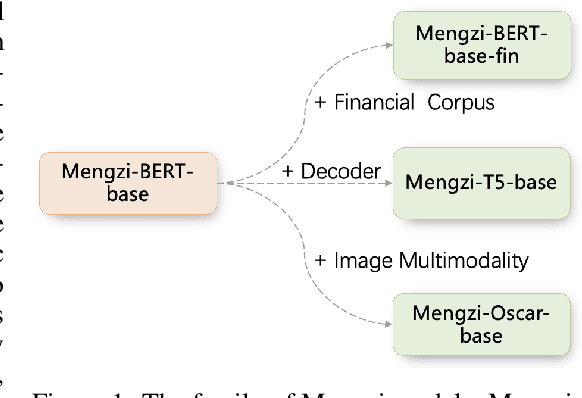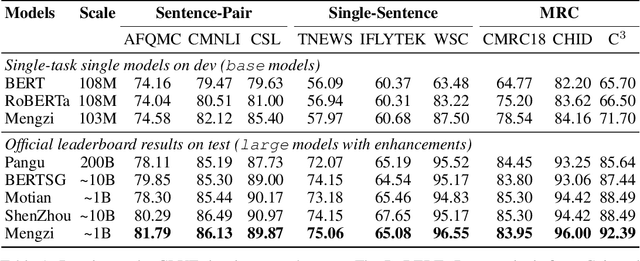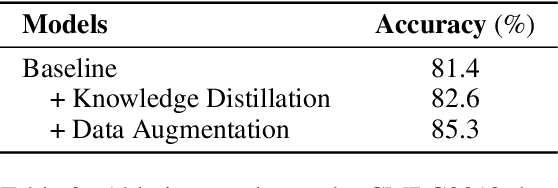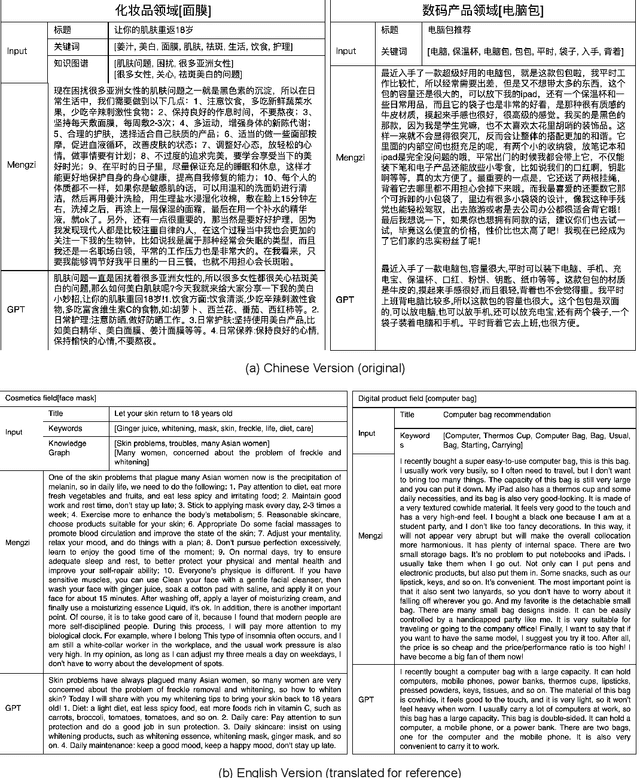Jingyun Hua
Mavors: Multi-granularity Video Representation for Multimodal Large Language Model
Apr 14, 2025Abstract:Long-context video understanding in multimodal large language models (MLLMs) faces a critical challenge: balancing computational efficiency with the retention of fine-grained spatio-temporal patterns. Existing approaches (e.g., sparse sampling, dense sampling with low resolution, and token compression) suffer from significant information loss in temporal dynamics, spatial details, or subtle interactions, particularly in videos with complex motion or varying resolutions. To address this, we propose $\mathbf{Mavors}$, a novel framework that introduces $\mathbf{M}$ulti-gr$\mathbf{a}$nularity $\mathbf{v}$ide$\mathbf{o}$ $\mathbf{r}$epre$\mathbf{s}$entation for holistic long-video modeling. Specifically, Mavors directly encodes raw video content into latent representations through two core components: 1) an Intra-chunk Vision Encoder (IVE) that preserves high-resolution spatial features via 3D convolutions and Vision Transformers, and 2) an Inter-chunk Feature Aggregator (IFA) that establishes temporal coherence across chunks using transformer-based dependency modeling with chunk-level rotary position encodings. Moreover, the framework unifies image and video understanding by treating images as single-frame videos via sub-image decomposition. Experiments across diverse benchmarks demonstrate Mavors' superiority in maintaining both spatial fidelity and temporal continuity, significantly outperforming existing methods in tasks requiring fine-grained spatio-temporal reasoning.
HAIC: Improving Human Action Understanding and Generation with Better Captions for Multi-modal Large Language Models
Feb 28, 2025Abstract:Recent Multi-modal Large Language Models (MLLMs) have made great progress in video understanding. However, their performance on videos involving human actions is still limited by the lack of high-quality data. To address this, we introduce a two-stage data annotation pipeline. First, we design strategies to accumulate videos featuring clear human actions from the Internet. Second, videos are annotated in a standardized caption format that uses human attributes to distinguish individuals and chronologically details their actions and interactions. Through this pipeline, we curate two datasets, namely HAICTrain and HAICBench. \textbf{HAICTrain} comprises 126K video-caption pairs generated by Gemini-Pro and verified for training purposes. Meanwhile, \textbf{HAICBench} includes 500 manually annotated video-caption pairs and 1,400 QA pairs, for a comprehensive evaluation of human action understanding. Experimental results demonstrate that training with HAICTrain not only significantly enhances human understanding abilities across 4 benchmarks, but can also improve text-to-video generation results. Both the HAICTrain and HAICBench are released at https://huggingface.co/datasets/KuaishouHAIC/HAIC.
Mengzi: Towards Lightweight yet Ingenious Pre-trained Models for Chinese
Oct 14, 2021



Abstract:Although pre-trained models (PLMs) have achieved remarkable improvements in a wide range of NLP tasks, they are expensive in terms of time and resources. This calls for the study of training more efficient models with less computation but still ensures impressive performance. Instead of pursuing a larger scale, we are committed to developing lightweight yet more powerful models trained with equal or less computation and friendly to rapid deployment. This technical report releases our pre-trained model called Mengzi, which stands for a family of discriminative, generative, domain-specific, and multimodal pre-trained model variants, capable of a wide range of language and vision tasks. Compared with public Chinese PLMs, Mengzi is simple but more powerful. Our lightweight model has achieved new state-of-the-art results on the widely-used CLUE benchmark with our optimized pre-training and fine-tuning techniques. Without modifying the model architecture, our model can be easily employed as an alternative to existing PLMs. Our sources are available at https://github.com/Langboat/Mengzi.
 Add to Chrome
Add to Chrome Add to Firefox
Add to Firefox Add to Edge
Add to Edge